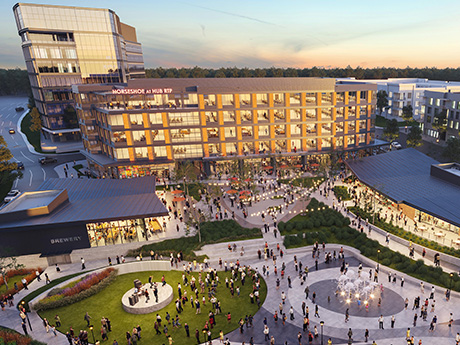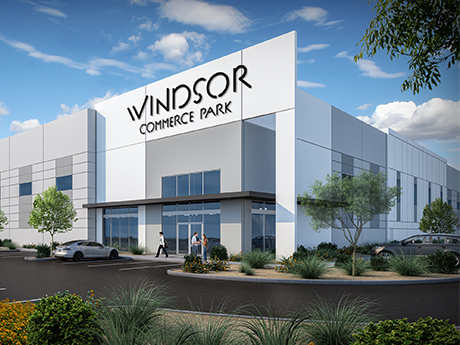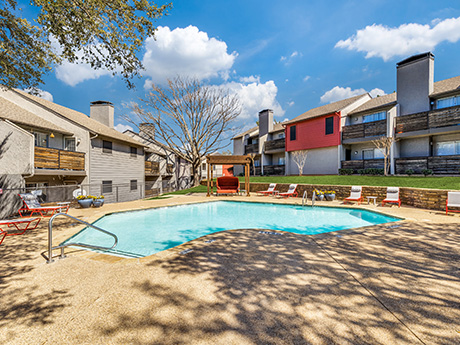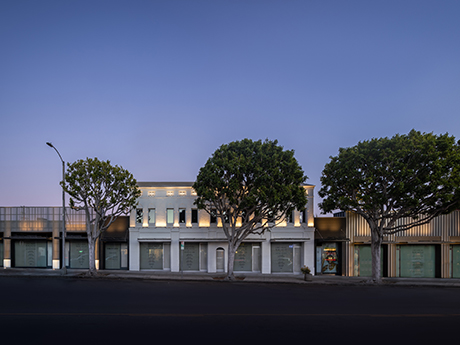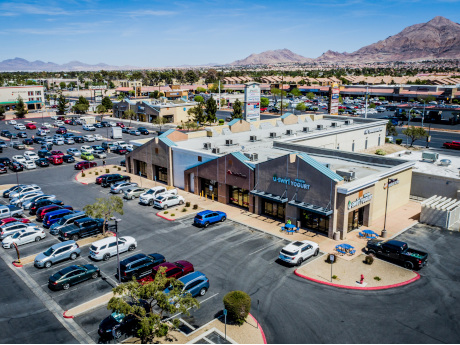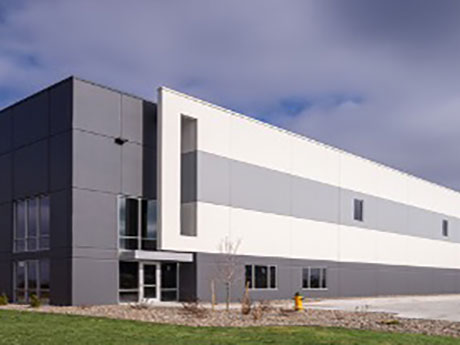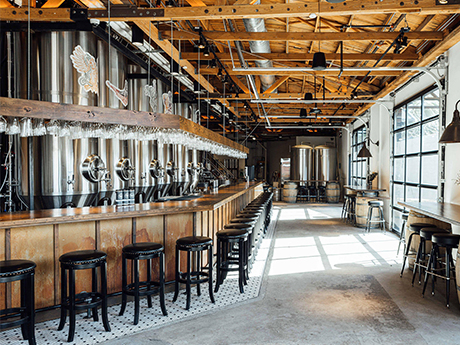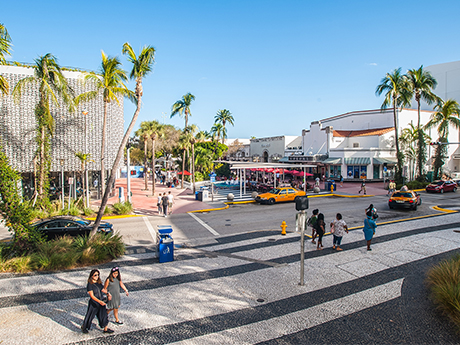Despite shifts toward remote and hybrid work, office rents continue to rise in North Carolina’s Triangle region. Among the 25 largest office markets in the country, Raleigh experienced the second-highest rent growth between 2019 and 2022 — a testament to continued tenant demand. We’re also seeing renewed interest in trophy assets, where the average asking rent has reached an all-time high of $43.35 per square foot. Additionally, the first quarter showed a 280,000-square-foot increase in total office supply, indicating investor confidence in Raleigh’s resilience. Compared to rival markets, Raleigh wasn’t overbuilt pre-pandemic. The market doesn’t have millions of square feet of vacant space downtown and is more balanced than its competitors, leaving plenty of opportunity for future growth. Another indicator of Raleigh’s growth trajectory is the 32 percent year-over-year increase in tours given by JLL’s Office Agency Leasing team this year. Given the current economic headwinds, we know that prospects are taking longer to make decisions about their space. However, we also know they are actively evaluating their options and making long-term plans for their team’s future needs. At buildings within our portfolio, badge swipes last quarter reached a post-pandemic peak utilization of 68 percent – just 13 percent shy …
Market Reports
— By James Hall, ABI Multifamily — It’s been a tumultuous year for global capital markets and asset prices, which have had to contend with a broad array of geopolitical and economic headwinds. The Las Vegas multifamily market — while it remains demographically sound — is dealing with inflationary-based pricing concerns and fundamental characteristics dampening investor appetite.Amongst all the noise and negatively skewed fundamentals, Las Vegas’ economy continues to grow, with tourism surpassing pre-pandemic levels this quarter. Harry Reid Airport reported the highest recorded number of passengers in February, indicating that the market continues to benefit from a surge in post-pandemic domestic tourism.A report released by the Federal Funds Information for States ranked Nevada as first in the nation for economic growth and momentum last year. The measurement considers a wide array of key economic and demographic indicators, including population, personal income and employment growth.While California continues to reel from a declining population, both Nevada and Arizona are benefiting from a surge in net-migration. The population of Las Vegas is expected to double by 2060, which would add an additional 2 million residents to the MSA, per Woods and Poole Economics..Las Vegas residents have a much higher propensity to rent …
— By Jerry Doty, Senior Vice President, Colliers — Las Vegas was once known only for its flashy casinos and luxurious hotels, but over the past several years, it has become a growing distribution hub for the entire West Coast. Las Vegas is situated at the intersection of several major highways, making it an ideal location for businesses that need to move goods quickly and efficiently. The city’s proximity to the ports of Los Angeles and Long Beach also make it a gateway for goods entering and leaving the United States. Our industrial market has had an epic rise in recent years, and up until the recent economic shake-up with rising interest rates and uncertainty in the capital markets, there was no end in sight. We continue to ask ourselves if 2023 will be the year things finally slow down or, even worse, take a step back. First, the good news. One of the most striking statistics about the Las Vegas industrial market is the extremely low vacancy rate. Despite delivering about 8.5 million square feet over the previous five quarters, we still sit at a near record-low overall vacancy of 1.5 percent for the first quarter of 2023. Even …
By Taylor Williams Multifamily investment sales activity has been muted across major Texas markets during the first half of 2023, underscoring the unfortunate reality that even the most coveted asset classes are not immune to severe macroeconomic headwinds. Much like a year ago, the combined effects of stubborn inflation and corresponding interest rate hikes have wrought visibly negative changes to the world of multifamily investment sales. But in summer 2022, deals were still getting done at a decent clip; price disparities and depreciation were the most significant and obvious impediments to deal velocity. Today, buyers and sellers are more closely aligned on market realities as relates to price points, but many are simply not motivated to transact — at least in the short term. According to data from RealPage, in the first quarter of 2023, there were 337 multifamily transactions within the Dallas-Plano-Irving triangle, down from 510 in the first quarter of 2022. The greater Houston area saw 266 deals executed in the first quarter this year, a decline from 410 during that period in 2022, while the Austin market’s total number of transaction fell from 191 to 123 quarter-over-quarter. Multifamily sales prices responded differently to reduced deal volume from …
One word comes to mind when you pair Los Angeles and real estate: expensive. But creating a premier space can attract top-notch tenants, which then brings in the nearby clientele that can afford to live, work and play in, well, LA. Of course, tourists are enthusiastic spenders as well. Price tags and calories don’t count when you’re on vacation, after all. Way Out West Malibu-based developer, manager and sponsor Christina knows all about what it takes to cultivate a dynamic retail offering in Los Angeles. In uber-developed areas like this, it typically takes a tired or underachieving retail space in a prime location that can be made into something grand. “Christina operates with a laser focus on investing only in the ultra-prime submarkets of Los Angeles: Beverly Hills, Brentwood, Century City, Malibu, Santa Monica, Westwood, West Hollywood and Venice/Silicon Beach,” says Lawrence “Larry” Taylor, founder and CEO of Christina. “Redevelopment opportunities in these submarkets, which have limited inventory of pedestrian-oriented retail streets, are rarely available.” Given their scarce availability, the 46-year-old firm’s strategy has been to establish and maintain relationships with property owners in these markets. “Then, when disposition opportunities present themselves due to life changes, estate planning or similar reasons, …
A wave of new-to-market office tenants — specifically legal tenants following the influx of financial firms and tech companies — continue to expand their presence in Miami. The trend further solidifies the city’s spot as a top destination for companies seeking reduced taxes, strong talent and vibrant communities. Looking back at the first quarter of 2023, net absorption totaled over 81,000 square feet (compared to 76,000 square feet in the first quarter of 2022), marking the third-highest quarterly total since 2020. Most leasing activity occurred in the Central Business District (CBD) and in Class A product in Wynwood and Coral Gables as tenants continue to lease high-quality space. However, the lack of availability in quality product, as well as the overall economic uncertainty, has led to a slowdown in leasing volume to start 2023 — particularly among new-to-market tenants. Leasing activity totaled 750,000 square feet in the first quarter compared to 1.5 million in fourth-quarter 2022. The quarter closed with a 16.3 percent vacancy rate, the lowest level since the onset of the pandemic in early 2020. Class A availability fell 260 basis points to 21.1 percent year-over-year with the largest drops recorded in downtown Miami, which fell 540 basis …
— By Todd Manning, Managing Broker, NAI Vegas, and Maria Herman, Senior Vice President, Retail Division, NAI Vegas — The Las Vegas retail market continues to perform well into 2023 despite a few headwinds (and headlines) dogging the industry. The success is due in part to Las Vegas continuing to experience strong growth coming out of the pandemic years. For example, visitor volume to Las Vegas reached more than 3 million people in February 2023, which was up 17.8 percent year over year, but was still down 3.4 percent from February 2019. Speaking of performing well, Las Vegas’ retail vacancy rate has been holding steady at around 5.2 percent, just slightly lower than it was a year ago. It is also the market’s lowest retail vacancy rate in over 15 years. Rent growth is slowing, however, and is down from the 10.4 percent gains of one year ago. Rent growth has been another bright spot for Las Vegas retail landlords as rates continue to increase at 7.7 percent year over year. Rent growth is slowing, however, and is down from the 10.4 percent gains from a year ago. Not surprisingly, the investment market for commercial property, retail included, has experienced …
By Jeremy Spillman and Corey Sedrel, Capstone Commercial In a setting where I-80 and I-35 intersect to make up one of the busiest truck traffic intersections in the Midwest, Des Moines is well positioned to harness the power of manufacturing in Iowa to support several larger Midwest cities such as Chicago, Minneapolis, Kansas City, St. Louis and Omaha. As we see change in our global supply chains, manufacturers and distributors look to states like Iowa to support these changing environments where we see these organizations moving away from the just-in-time model to just-in-case. The transition to a just-in-case supply chain model began to form due to several supply chain-related issues we encountered during the pandemic. This led to higher demand for additional warehousing to be constructed. Availability of large cube warehousing had been historically tight in Iowa since 2012 where most years carried vacancy rates of 2.5 to 4.5 percent annually. During 2022, there was 2.97 million square feet of warehouse/distribution space delivered to meet the increase in demand of rising inventories. “From the construction standpoint, supply chain issues are subsiding, but there are still longer than normal lead times for certain trades and equipment. These lead times are still …
— By Evan Jurgensen, Senior Vice President, Lee & Associates Los Angeles – Downtown — As the pandemic recedes, the hospitality and food and beverage industries in downtown Los Angeles are rebounding, driven in part by the return of venue entertainment and conferences. The number of visitors to the area has climbed back to within 10 percent of pre-pandemic levels and now sits at 10 million people per month. Consequently, there has been an influx of new restaurants, venues and breweries in the region. However, as overall occupancy levels in the market remain in flux, businesses are becoming mindful of how they utilize their spaces to achieve a triple bottom line impact that benefits not only the asset owner, but also the consumer and community at large for the long run. Increased Investment in Outdoor Space Outdoor dining saved many restaurants during the pandemic and continues to have great appeal in the present day. In addition to being a healthier option for diners, outdoor seating allows restaurants to handle more customers at once and increase profitability. Los Angeles city officials created a streamlined process known as the L.A. Al Fresco program in May 2020, which allowed more than 2,500 restaurants and …
Miami is a vivacious city renowned for its scenic beaches, sunny climate and dynamic nightlife. The South Florida city is also a hub for a flourishing retail industry, which serves an eclectic blend of both locals and visitors. Miami’s retail market is characterized by its diversity, with a broad spectrum of retailers ranging from luxurious, high-end boutiques to small, locally owned businesses. This range of retailers is a reflection of the city’s diverse population, which includes a sizable Hispanic community, as well as individuals from all corners of the globe. Consequently, Miami’s retailers must be adept at catering to a wide range of tastes. One of the most notable trends in the Miami retail market in recent years has been the growth of e-commerce. Like many other cities around the world, Miami has seen a significant increase in online shopping. This has presented both challenges and opportunities for retailers in the city. On the one hand, the rise of e-commerce has led to increased competition for brick-and-mortar retailers in Miami. Online retailers such as Amazon and Walmart have made it easier than ever for consumers to shop from the comfort of their own homes, and this has put pressure on …


